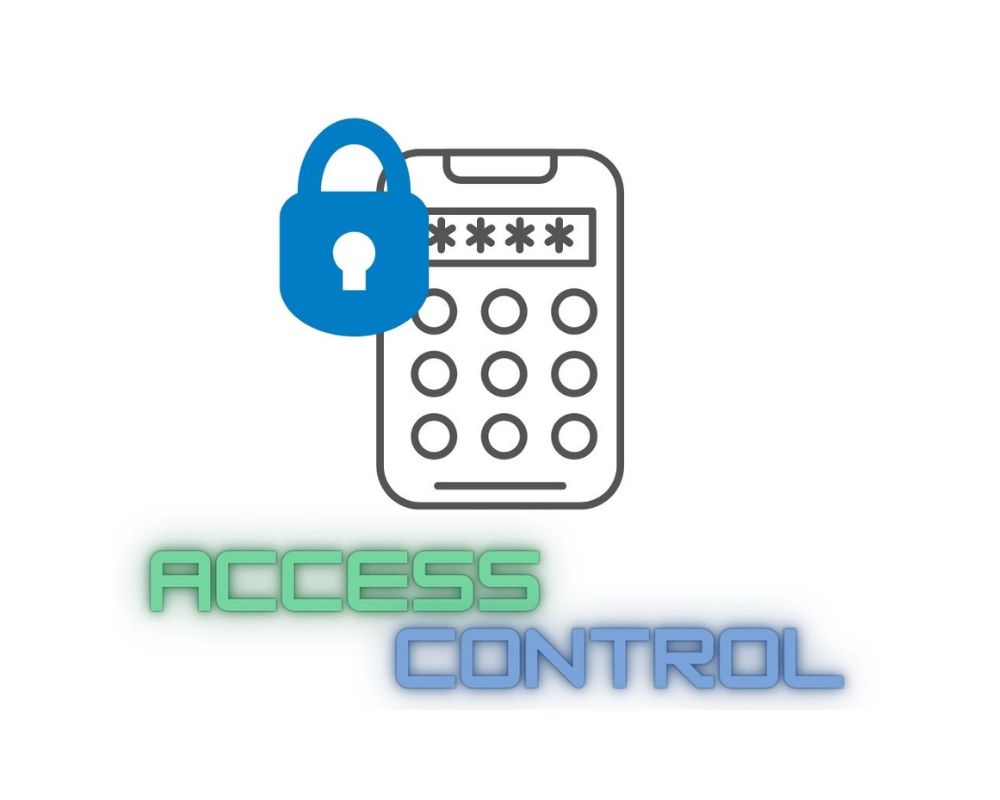We use cookies to make your experience better. To comply with the new e-Privacy directive, we need to ask for your consent to set the cookies. Learn more.
Access Control – Everything you need to know


Being in control of who and when someone enters your premises is at the core of your property or site safety.
You may hear the term access control used to describe cyber security, but what about your physical security? Physical access control systems are used across a huge range of businesses, organisations and institutions, from schools and offices to security gates and turnstiles.
Access control systems are often installed to protect premises from theft or vandalism, or for places that require higher levels of security or safeguarding. They can use a range of products and accessories to fit each organisation’s needs so there is a solution for everyone.
Thanks to advancements in technology, access control can even be programmed using wireless cloud software, giving you unparalleled access to flexible and scalable security solutions.
But what are the benefits of access control, and how do you know which type is best for you? We will look in-depth at access control systems and provide practical advice when considering which system to choose.
What is access control?
To put it simply, access control lets you decide who, and when, an individual can enter/exit a secured area. This gives you full control over on-site authorisation through simple, easily integrated systems that can include both physical management systems such as keypads, to network-based systems that can work on the swipe of a smartphone. While safety and security are the key reasons for installing access control systems, they can also help in a number of different ways.
Access control can contribute to:
- Improving the efficiency of your organisation through strategic access management for the site or building visitors.
- Reduce the need for physical keys, and cut down on costs when replacing lost or damaged keys.
- Accurately track who is currently on-site or has been on site.
- Improve staff flexibility, giving them safe access to the work premises at times that suit them.
- Improve staff morale by creating a safe and secure working environment.
Access control systems aren’t restricted to offices or building sites and are commonly found in a range of everyday locations, such as healthcare establishments and hospitals, centres of worship, schools, government buildings and retail stores. Access control solutions give you the power to significantly improve your security protocols, with solutions that scale with your business as you grow or expand.
The different types of access control
Depending on your level of security needs, there are several access control options that may benefit your organisation. Here are some of the main ones:
- Keyless access control – take your security to the next level and rid your organisation of bulky key chains, while saving money on replacements. Keyless access control systems work on modern electronic systems, giving you the most up-to-date security access available.
- Web-based access control – many access control systems now work on a wireless basis, giving you complete control from a simple, user-friendly web interface, allowing you to control and monitor your access points remotely.
- Cloud-based access control – there’s no getting away from it, ‘the cloud’ is now part of our everyday lives. Modernise your security systems with cloud-based access control functionality, giving you access to massive amounts of data storage and centralised analytics.
- Mobile access – In the same vein as keyless control, mobile access is a convenient and easily accessible way to use smartphones as key cards.
- Multi-door access – fully optimised for use across a larger number of doors, multi-door systems provide you with a centralised system for wider scale access control.
- Standalone access control – simple, but effective. Standalone access control is a single unit that allows for smaller-scale access for selected entry points.
Picking the right access control system to suit your organisations' size, location and security needs can be tricky. We’re on hand to help provide the best in access control solutions, designed to meet your individual requirements. If you need more information on the different types of access control that we provide, don’t hesitate to get in touch.
Access control systems vs manual control
Access control systems are growing increasingly popular with organisations of all shapes, sizes, and industries. From small start-ups to multi-national corporations, safety is paramount in protecting your staff, your premises, and your assets.
But why should you choose an access control system over a more traditional manual control system using mechanical keys?
Here are a few reasons:
- It’s human nature for us to misplace items, or in the worst-case scenario, have them stolen. If the worst should happen, it can cost you a hefty amount of cash to not only replace the lost key, but there’s also the possibility of having to replace the locks to ensure the lost keys can’t be used by the wrong people.
- Access control systems get rid of the need for bulky, inconvenient key chains, especially for members of your team who may need access to more than one access point.
- Keys don’t provide you with the added level of security which comes from the capabilities of access control points.
Access control legal information
It goes without saying that if you choose to use an access control system, it is important to have procedures and policies in place that ensure the safeguarding of any sensitive data you store.
Having access to trackable data that shows who entered your premises and when is one of the key benefits of access control systems. However, it does mean an additional level of security is required for both your staff and your guests.
Some access control features allow you to view and store video surveillance that can be saved to a physical storage device or kept in the cloud.
Secure systems that house employee or site visitor sensitive data such as names, dates of birth, job functions are roles are crucial. This data should be regularly kept up to date to ensure the information you have on file is accurate.
What you need to know before you buy
Before you decide to make the switch to physical access control systems, there are a few key questions you should consider:
- How large is your premises? Do you have multiple premises or several areas within your premises that require different levels of security?
- How many staff or site visitors will need to use your access control points on a daily basis?
- Will your access control systems be required to meet any additional levels of compliance?
- What are the main security concerns that you hope to address with access control solutions?
- How straightforward to use is your chosen system? Will it require any additional training?
- Is your access control system scalable and will you be able to add additional access points as you grow?
- If your access points require software updates, how will these be carried out? Will they be processed automatically, or will they need to be completed manually by a member of staff?
In the aftermath of the COVID-19 pandemic, many organisations have been forced to re-evaluate their safety procedures and requirements. Introducing touchless access control systems, for example, can give you fully flexible safety with minimal contact.
It is also important that all of your staff, clients or site visitors are aware of any new systems you introduce and are fully trained in how to use them, as well as any new policies or procedures that will be implemented alongside your new access control systems.
Whenever you decide the time is right to switch to access control systems, Door Entry Direct are on hand to help. With a wide range of access control solutions to suit your needs, we can cater to your business, no matter how big or small.
Trust Door Entry Direct with your new access control system
For more information or to chat to a member of our team about your access control options, get in touch.







